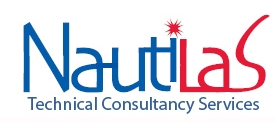Conventional reconditioning techniques based on arc welding such as MIG/MAG, submerged arc and MMA have been successfully used for the repair of a wide variety of components. However, due to a relatively poor spatial energy concentration, they often result in considerable heat input to the component. This in turn may lead to distortions, significant dilution, large heat affected zones and in general the degradation of the base material. Furthermore, the quality and final outcome of the process is highly dependent upon the skill of the welder and therefore repeatability can be relatively poor. Thus critical and highly stressed engine components such as piston rods, crosshead pins, crankshafts, final shafts etc. are rarely reconditioned using these techniques.
On the contrary, the low heat input of the laser cladding technique combined with the high the capability for defect free overlays strongly adhered to the substrate, renders it ideal for the reconditioning of such components. Utilising the high capacity laser cladding system of Roussakis S.A. several final shafts with lengths up to 15m have been reconditioned under the supervision of the classification societies which have approved the repairs as permanent ones.
The main advantages of the technique in this particular application are:
- Finer overlays possible due to lower dilution. Up to 70% less operating costs can be therefore realised offsetting the higher investment costs compared to conventional techniques
- Less material to be removed due to improved overlay thickness accuracy
- Less rework necessary due to fewer distortions
- Less man hours necessary due to fewer operations and faster delivery
- Less surveillance necessary
- Enhanced wear and corrosion resistance
- Continuous cladding possible while maintaining interpass temperatures under the desired limits

